Star Wand Tutorial
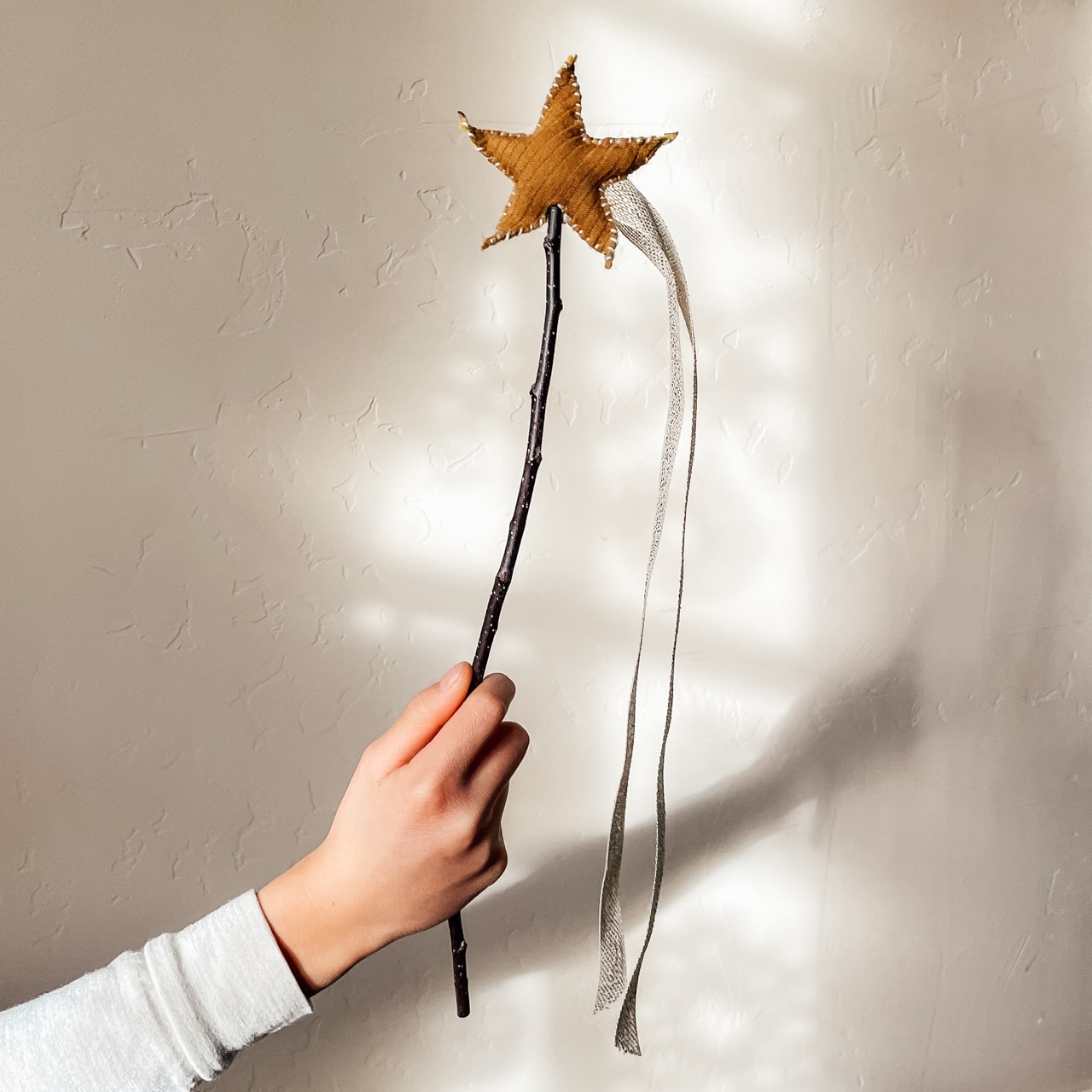
As part of our Winter Fair at Home this past holiday season, many of our families were able to experience the joy of the children’s activities together at home with our assembled craft kits. One of our much loved craft activities was a star wand, and today we are sharing a variation that you can make with materials you likely already have at home. We used some scrap fabric, felt, and used holiday ribbons making it a perfect upcycled project too.
The satisfaction of making and crafting by hand has always played an important role in our Waldorf curriculum. Stitch by stitch, we learn to appreciate the materials, the process, and the capabilities of our own creativity. We develop patience, fine motor skills, and confidence. And with this star wand, we bring a touch of magic to our days! Enjoy.
Materials
– wooden stick or dowel
– scrap fabric for one side of star
– felt for other side of star
– ribbons
– embroidery thread or thin yarn
– wool roving or scrap fabric for stuffing (optional)
– hot glue

Instructions
Step 1. Trace the 3″ star pattern (or make your own!) onto the scrap fabric and felt.
Step 2. Cut stars out and stack together.
Step 3. Knot one end of thread and begin stitching the stars together at the bottom (we used blanket stitch).


Step 4. When stitched 3/4 of the way…pause. Add wool roving as stuffing (optional), and place end of ribbons into star. Continue stitching so that ribbons are sewn into star.

Step 5. Stop stitching just before you meet where you began, leaving a small hole for the wooden stick or dowel. Tie thread off securely and sew end of thread inside of star.

Step 6. Add a small amount of glue inside of star and place the end of the wooden stick into star. Press star around wooden stick to secure.
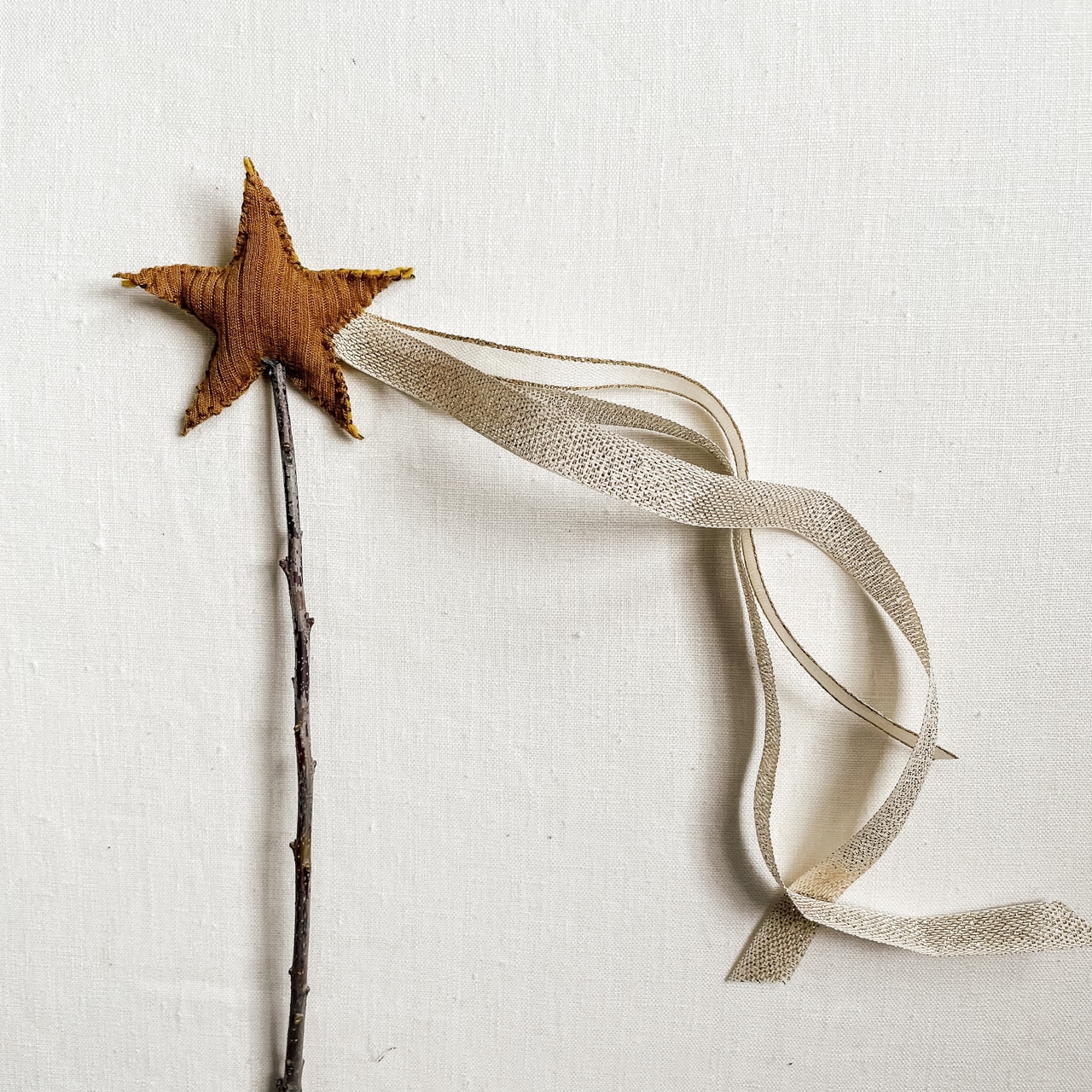
Step 7. Make all the magic!

A Peek at our 2020 Journey Together
As we reflect on the year almost behind us, we sit in gratitude for our community. Through it all, you have shown your continued commitment, resilience, and light for our days ahead together. Thank you for journeying with us.
Here is a peek at our days together through the 2020 year, with accompaniment by our 2019/2020 high school choir singing John Lennon’s “Imagine.”
Soup Day in Early Childhood
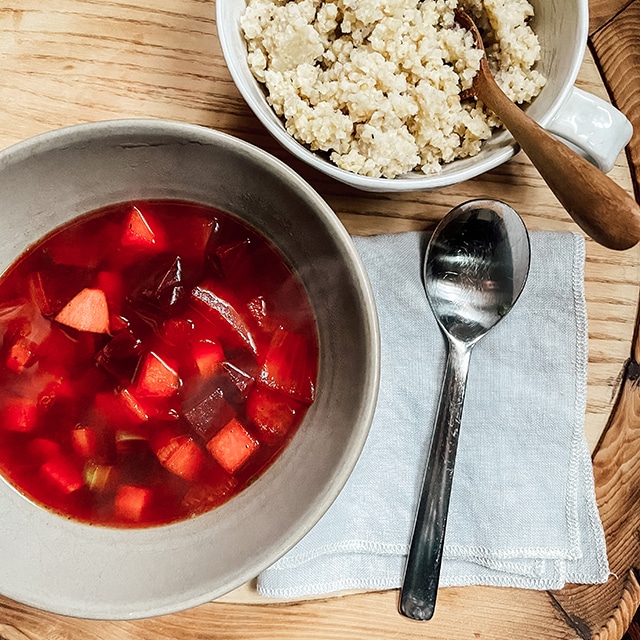
The shared snacks in our kindergartens are an integral part of our daily and weekly rhythms. It is another element that brings consistency and predictability to the children, helping to foster a sense of comfort and security in their world around them. The children often know the days of the week by our snack, asking “is it soup day?!” instead of asking “is it Wednesday?!”
On soup day, they start the morning by coming around the table ready to have a hand in purposeful work. They chop the vegetables together, with everyone contributing to the shared meal. It is a time for our little ones to understand how our food is made, to participate in meaningful work, to work on their fine motor skills, to appreciate the entire process and all of the smells and tastes that go with it, and to celebrate the importance of gathering around the table.
On this wintry day at home during break, we thought we would share one of our much loved kindergarten soup recipes below so you can enjoy it together with your children.
Larkspur Kindergarten Vegetable Soup
1 large or 2 medium of each of the following veggies:
beet
turnip
parsnip
onion
sweet potato
3 or 4 carrots and stalks of celery
avocado oil to taste
bouillon cubes to taste (we use Rapunzel brand Vegetable Bouillon with Herbs)
salt to taste
Cooked millet to serve as an add-in:
1 cup of millet
2 cups of water
1/2 stick of butter
salt to taste
Chop all the veggies very small. Saute the onion and celery in avocado oil until soft. Add water, bouillon, and chopped veggies to the pot. Cook until all the veggies are soft.
Add millet, water, and salt to a rice cooker, or cook on the stove. When finished, add butter and let melt. Offer as an add-in to the soup.
Serve with cheese cubes and crackers. Enjoy!
Holiday Coloring Pages
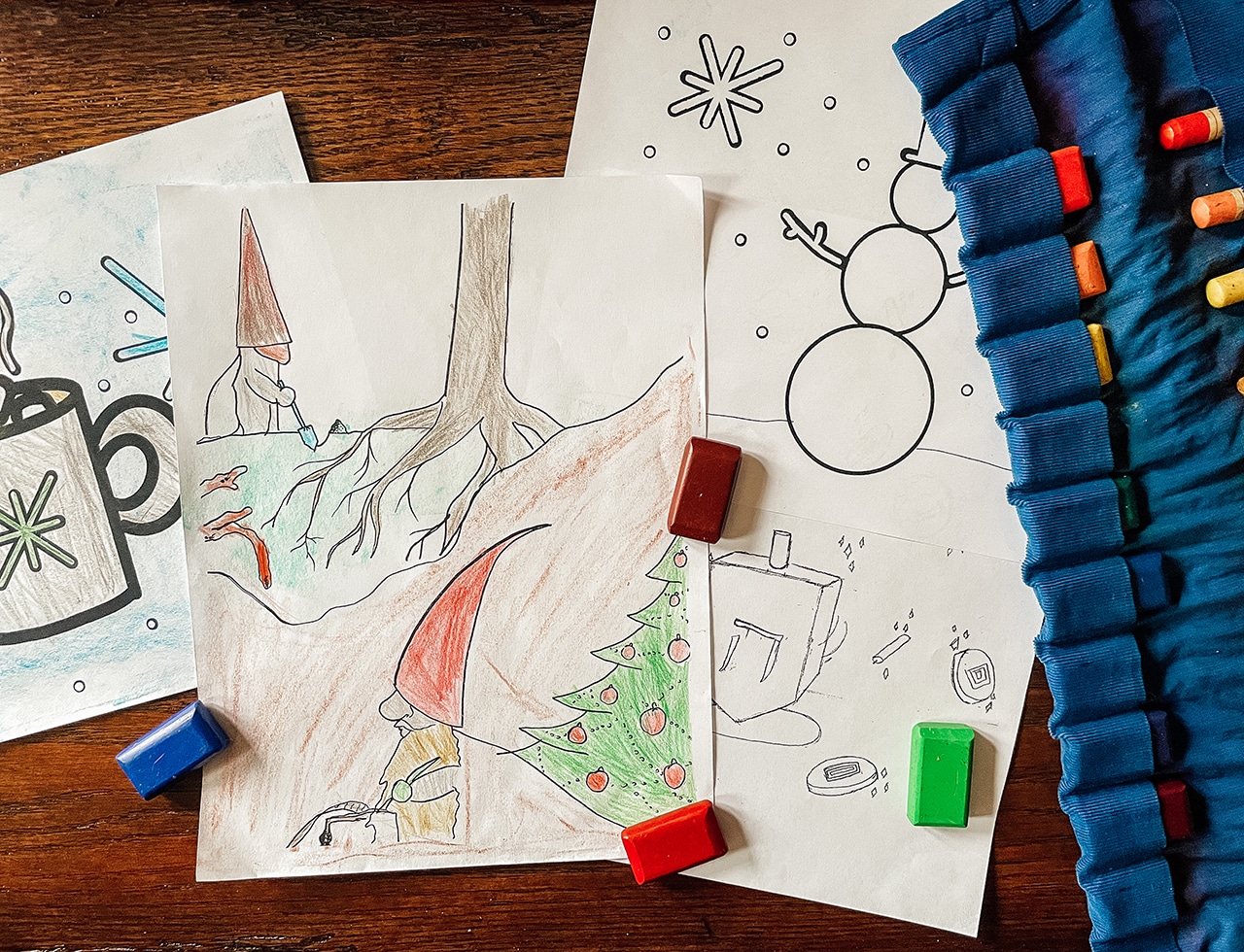
The special bond that exists between our first and eighth grade buddies is such a treasured one. Even in this year of distancing, they are finding creative ways to show their care for one another! As part of a collaborative gift to the first graders, our eighth graders assembled small gift bags together for the first graders including crafted ornaments, pinecone bird feeders, window stars, and outlined drawings to make a coloring book.
With more time at home this holiday season, our eighth graders have generously shared their original coloring book for all of our little creative spirits in the community to enjoy! You can download their holiday coloring pages here.
Enjoy!
Bread Baking in Early Childhood
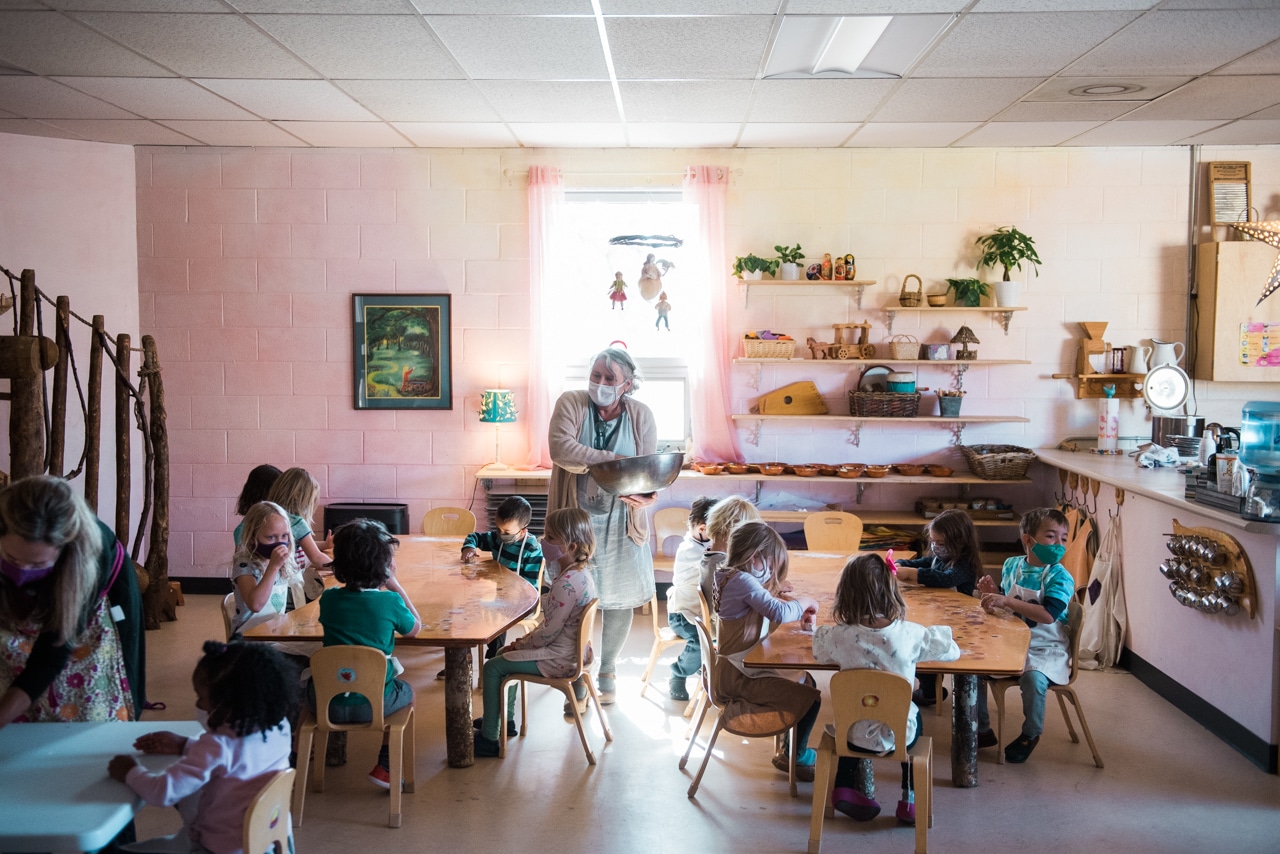
If you need a hand in the kitchen tomorrow, remember that your kindergartner can handle the bread baking! Not just during Thanksgiving, but every week we bake bread together in our kindergartens in preparation for snack time. It is a time for our little ones to understand how our food is made, to participate in purposeful work, to use their creativity to shape the dough, to appreciate the entire process and all of the smells and tastes that go with it, and to celebrate the importance of gathering around the table. We are grateful that we have been able to enjoy the company of your children in this unusual year.
For anyone at home who would like to make bread with your children, we have shared one of our much loved kindergarten bread recipes below.
Morning Glory Bread
2 cups warm water
1 tablespoon yeast
1/2 cup organic honey
1 teaspoon salt
1/4 cup of good organic oil
organic whole wheat flour (you can also mix some organic white flour in)
Mix warm water and yeast in a large bowl, add honey and salt, then add oil. When this is all mixed, add a cup or so of flour at a time and mix well until you have a nice dough. Cover the dough with a clean towel and let it rise for about an hour. When the dough has risen, smush it down with your hand and let it rise again for about a half hour. Then, knead the dough (the children are very good at this) for a while. You and your child can shape it however you would like. They can take small pieces to make what they want and you can braid the dough or shape it into a loaf. Bake it at 350 until it is a golden brown. We love it with sunflower butter and jam or just butter is delicious! We have fruit with our homemade bread for our snack.

The Denver Waldorf School Happenings
November 2020
The Denver Waldorf School is a k-12 independent school in Denver, Colorado
Shining Our Light - Martinmas & The Lantern Walk
As the leaves change and fall from the trees and as the chill returns to the air, we become aware of the changing light. The harvest season has come to an end, and we celebrate the opportunity to take the light given to us in the summer months and share it with the outside world. We celebrate Martinmas.
Martinmas occurs each year on November 11th. We celebrate by honoring St. Martin and the gentle warmth and love he brought to the world. Legend tells us that St. Martin was a gentle and unassuming man who upon discovering a poor beggar, took his own coat, tore it in half, and covered the shivering beggar from the cold. Martinmas calls us to shine our inner light to others as the darkness of the season grows stronger.
Celebrating Martinmas at The Denver Waldorf School
The younger grades and the kindergartens (and recently our high school students too!) celebrate this light within us during their class Lantern Walks. Leading up to the Lantern Walk, they each work to create a handmade lantern, which will symbolically protect their light within and fill the dark night with the soft glow of illumination.
The Lantern Walk is a community event during which we are reminded of our shared humanity and our need for each other to keep our light glowing and to count on each other to light our way. It is a reverent time to walk slowly, deliberately, quietly, carefully keeping light and song alive through the dark night for each other. The group of lanterns is beautiful to behold in the dark and we remember that we are not alone. May we move forward in the season ahead, spreading our gifts, our light, our community – and illuminating the beauty of our shared goodness.
Celebrating Martinmas at Home
For those partaking of Martinmas in your own neighborhood, here are some of the traditional Lantern Walk songs, so that you can fill the night with music and light. Shine bright!
I Go Outside With My Lantern
I go outside with my lantern, my lantern goes with me
Above me shine the stars so bright, down here on Earth shine we.
So shine your light in the still dark night, la bimmel, la bammel, la boom, boom boom.
‘Neath heaven’s dome till we go home, la bimmel, la bammel, la boom, boom boom.
My Lantern
So my lantern can really shine bright!
Glimmer Lantern, Glimmer
Glimmer lantern glimmer, little stars a-shimmer.
Over meadow, moor and dale flitter flutter elfin veil.
Pee-wit pee-wit, tick-a-tack-a-tick, coo-coo-roo-coo.
Glimmer lantern glimmer, little stars a-shimmer.
Over rock and stock and stone wander tripping little gnome.
Pee-wit, pee-wit, tick-a-tack-a-tick, coo-coo-roo-coo.

High School Happenings at The Denver Waldorf School
Developing the Vestibular Sense

Children love to play. They swing, spin, somersault, and move every way they can. This isn’t just coincidence that when we allow the space and freedom to play, children will gravitate towards these experiences. These movements and activities all work to strengthen their vestibular sense- the balance sense.
This vestibular sense tells us where we are in relation to the earth and its gravity. The vestibular sensory organs – the semicircular canals – are located in the inner ear. Movement of the head in any and all directions stimulates the fluid in these chambers, informing our brains of our body position in relation to all that is around us. As children are able to move about, engaging their vestibular sense, they are developing and strengthening this ever important sense of balance.
However, it has to do with even more though than just balance. As our own Nancy Blanning and Laurie Clark have noted in their article Strengthening the Foundational Senses of the Young Child, “The importance of this sense of balance cannot be overemphasized. It is a unifying element in the whole system and seems to prime the entire nervous system to function properly.” The healthy development of the foundational senses in the young child serves as the strong roots for all higher level learning- both in childhood and throughout life. As Nancy and Laurie have noted, “When the foundational senses are functioning well, the child has pleasure and joy in being within his/her body. He moves in a balanced, coordinated, integrated way. He is eager to explore the world and new sensory experiences, and is not timid. The child is well-balanced, both literally and metaphorically.”
Our daily activities during our time together at The Denver Waldorf School aim to strengthen the vestibular sense, and all of our primary senses. The emphasis on the importance of free play, the movement and rhythmic games incorporated into our learning, and the exploration of nature and the outdoors, no matter the weather, are all intentional building blocks to giving our children a strong foundation for their healthy development.

2020-2021 Reopening Plan: August 13, 2020 Town Hall- WATCH VIDEO
 Date: August 13, 2020
Date: August 13, 2020
Time: 6-7:30 pm
Location: Zoom or live stream
Denver Waldorf School hosted a virtual Town Hall with School Director Kelly Church and Dream Team Faculty Panel about our plans for reopening for the 2020-2021 school year.
Video Recording
For those who couldn’t attend live, enjoy our zoom recording below.





